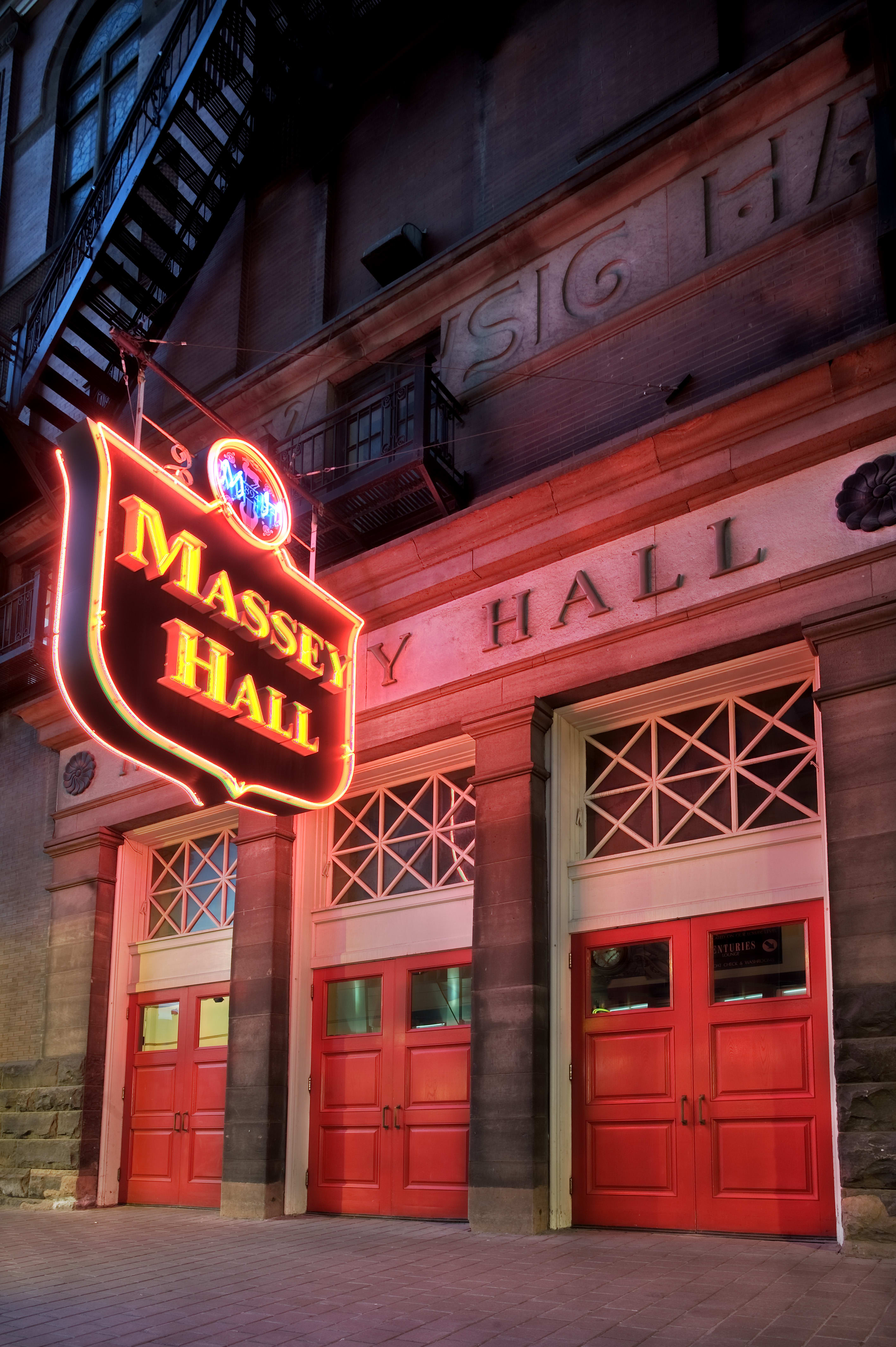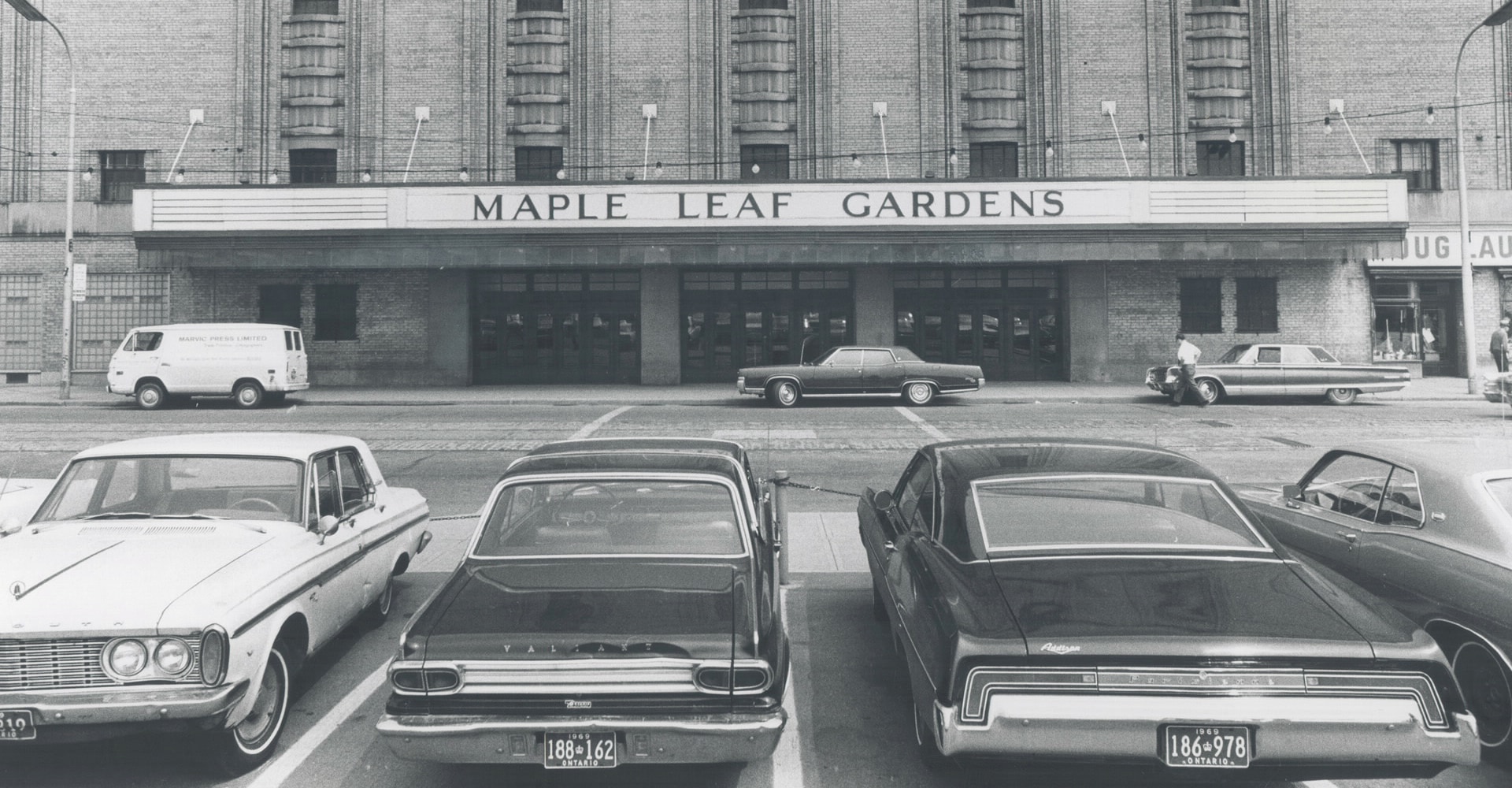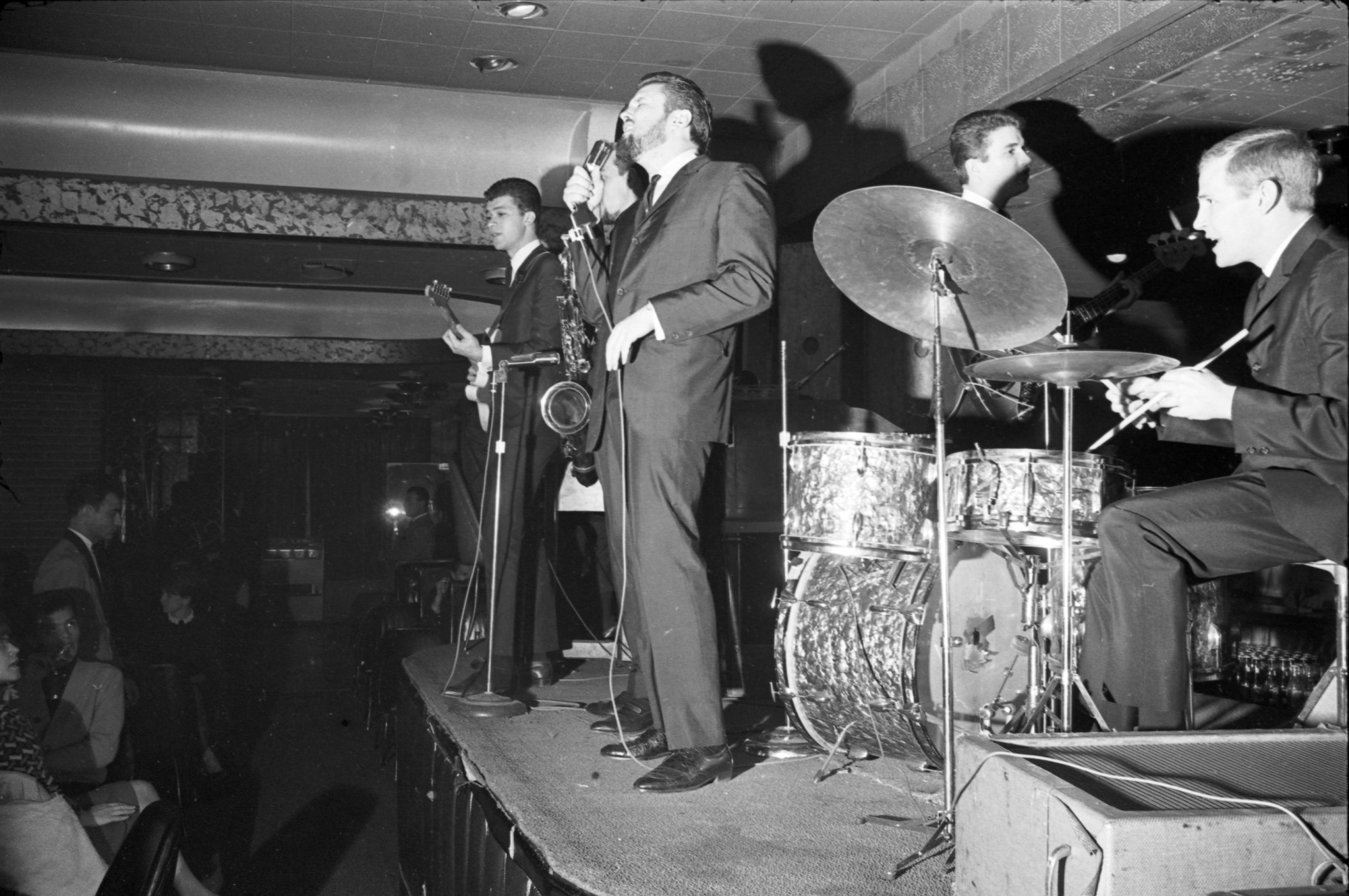
In 1970, Ontario was known in music circles for one thing --“the boys in the Band.” Despite the nostalgic Americana-type music they were known for, many of the core members of the legendary group hailed from the province.
Toronto may have known the band as the Hawks in the early 1960s when they played with Ronnie Hawkins at Yonge Street’s Le Coq d’Or. The world came to know them as the band that played with Bob Dylan. When they released their own records, the group chose to keep their name simple: just the Band.
Achieving international fame with their own songs by the late 1960s, the Band helped to usher in a new sound of Americana music. Echoed in music ranging from Eric Clapton to Wilco to Pink Floyd, the Band remains one of the most enduringly influential musical groups of the twentieth century.
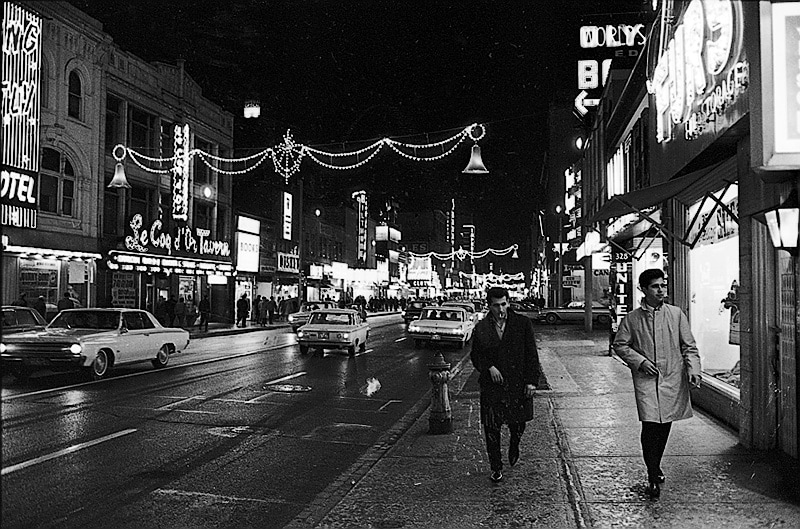
Downtown Yonge Street in the 1960s. The Coq d’Or Tavern can be seen on the left.
York University Libraries, Clara Thomas Archive and Special Collections, Toronto Telegram fonds, ASC01221
Rock and Roll Comes To Toronto
In the late 1950s, Toronto’s Yonge Street was witnessing a music revolution. The big band era of the 1940s was over and a new sound was emerging: rock and roll. It featured electric guitars and a heavy beat. To hear this new sound there was no better place to go than Le Coq d’Or, featuring singer Ronnie Hawkins, and his back-up band, the Hawks.
Hawkins may have been from Arkansas but his band was mostly Canadian. There was bass player Rick Danko from a rural area outside of Simcoe, pianist and singer Richard Manuel from Stratford, organist Garth Hudson, and Robbie Robertson from Toronto. The band members were young and eager, all in their teens or early twenties.
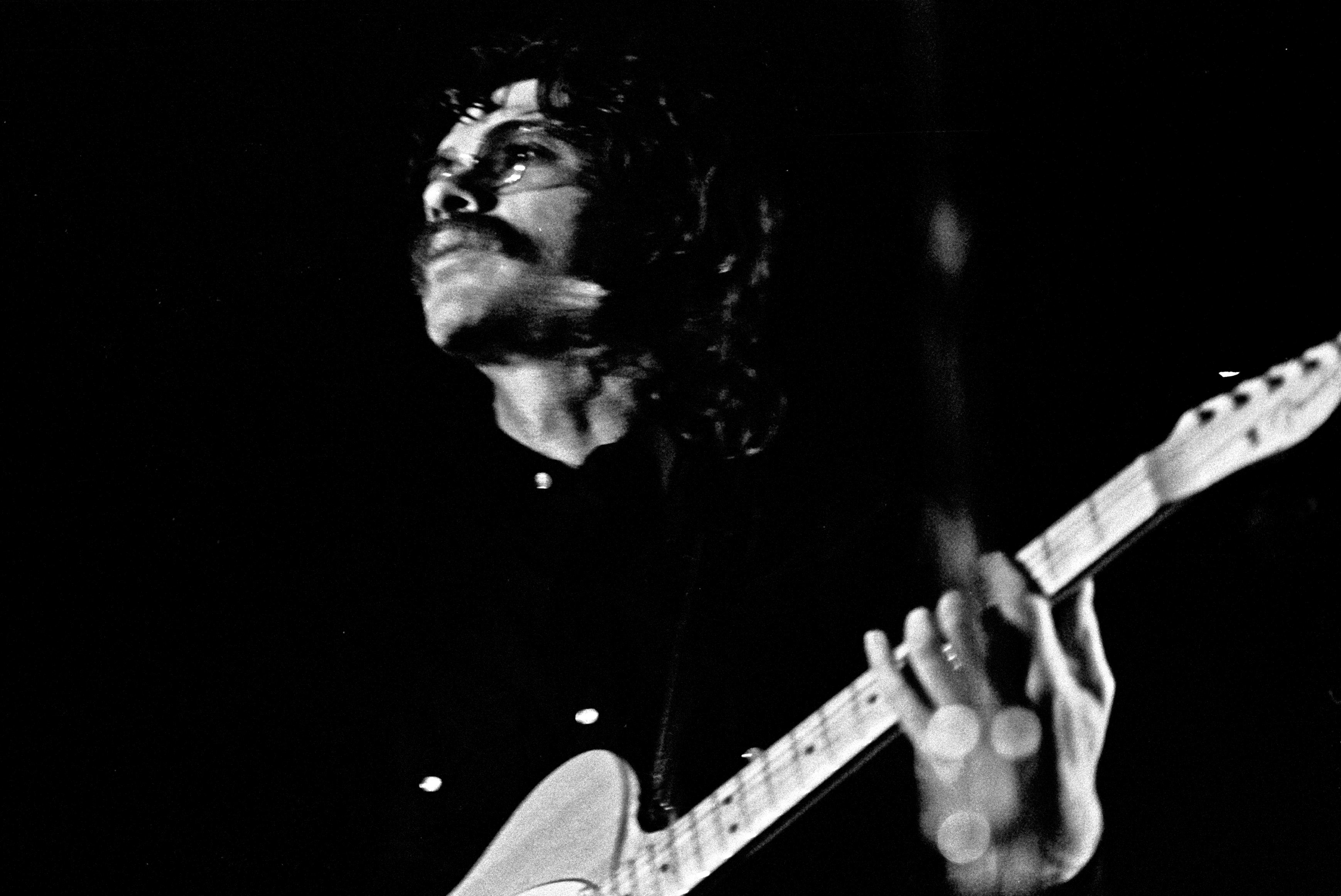
Robbie Robertson performing with the Band in Germany in 1971.
Photo by Heinrich Klaffs; licensed under Creative Commons
Robbie Robertson
Jamie ("Robbie") Robertson, the future lead guitarist of the Band, was born in Toronto in 1943 to a Mohawk and Cayuga mother and Jewish father. He divided his time between the multicultural Cabbagetown neighbourhood of Toronto and the Six Nations of the Grand River reserve. It was on the reserve that his interest in music grew: learning to play guitar and listening to the country and rock music his neighbours played.
At fifteen years old, Robbie scored a gig opening for Ronnie Hawkins and the Hawks, a new rockabilly band from Arkansas playing at Yonge Street’s Le Coq d’Or. His talents on the guitar and for writing songs earned him a permanent spot in the band.
Listen: Hey Boba Lou
During the late 1950s and early 1960s, Ronnie Hawkins and the Hawks divided their time between regular appearances at Le Coq d’Or and touring the United States. Life wasn’t always easy for a rock and roll band at the time, often dismissed as a new and fleeting music fad in many parts of the US and Canada.
While on the road, Robbie Robertson proved his songwriting talents, co-writing some of Hawkins’ early hits, like this song, “Hey Boba Lou.”
This online exhibition uses third-party applications including Spotify and YouTube. Check with your organization’s web administrator if you are unable to access content from these channels in the exhibition.
Levon and the Hawks
By the early 1960s, the Hawks were restless. Ronnie Hawkins was a disciplined leader, forbidding the band’s girlfriends from attending shows in case they proved a distraction. Frustrated with Hawkins, the Hawks decided it was time to go their own way.
Canadian players Robbie Robertson, Richard Manuel, Garth Hudson, and Rick Danko set off on their own, along with the Hawks' Arkansas-born drummer, Levon Helm.
The new group performed under several names, often Levon and the Hawks or the Canadian Squires. They took any gig they could, often performing at other Yonge Street venues such as the Friar’s Tavern, just steps away from their former bandleader who continued to perform at Le Coq d’Or.
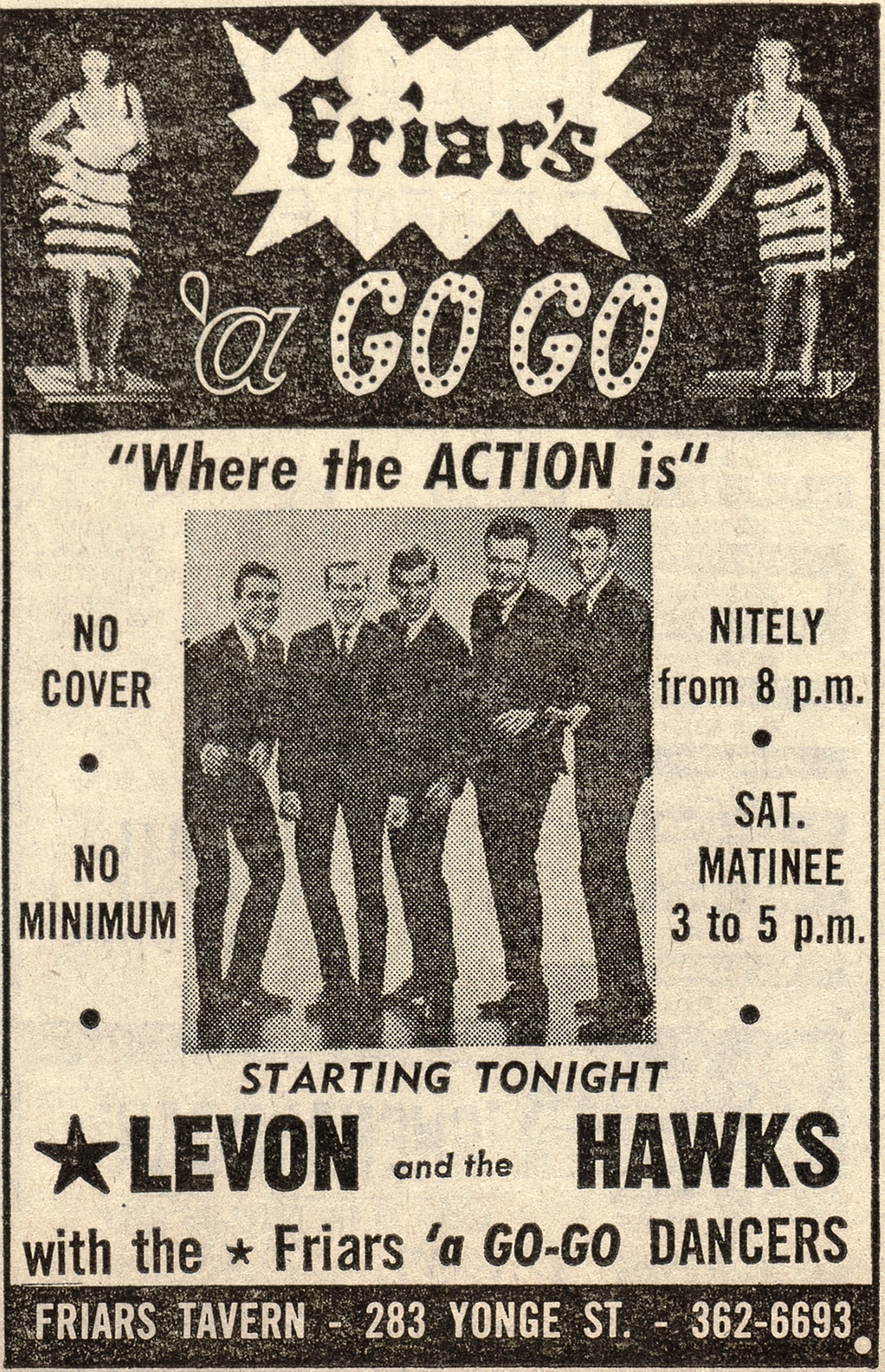
A flyer advertising a performance by Levon and the Hawks in 1965 at the Friar’s Tavern on Yonge Street.
Courtesy of The Flyer Vault
A Folk Music Revival
During the early 1960s, folk music exploded in popularity throughout the US and Canada. Ronnie Hawkins may have been rocking out at Le Coq d’Or. But just a few blocks north on Yonge Street was Yorkville, Toronto’s folk music hub. There, coffee houses like the Riverboat were packed as audiences turned up to see Gordon Lightfoot, Neil Young, or Joni Mitchell play acoustic guitar and sing.
In the United States, Bob Dylan had become the de facto leader of the folk music revival by 1965. With his acoustic guitar, Dylan became famous for songs like “Blowin’ in the Wind” and “A Hard Rain’s Gonna Fall.” Such songs became anthems of cultural and political touchstones of the 1960s, from the Civil Rights Movement to Cold War anxieties about the threat of nuclear war.
This online exhibition uses third-party applications including Spotify and YouTube. Check with your organization’s web administrator if you are unable to access content from these channels in the exhibition.
Listen: Like a Rolling Stone
Bob Dylan and the Hawks’ fate intertwined in 1965. After hearing the group play, Dylan hired them to be his new backing band on his upcoming world tour.
What initially seemed like the opportunity of a lifetime soon became a hard reality. In the summer of 1965, Dylan revealed a new song “Like a Rolling Stone”, which featured a fully electric rock and roll sound. The move away from acoustic guitar and a reliance on a backup band was a shock to Dylan’s fans in the folk music world. Dylan’s 1965–1966 world tour, featuring the Hawks as his backing band, was a disaster.
Fans and critics alike reacted poorly to the new electric sound.
In the first, and infinitely better, half of the evening, Mr. Dylan gave an agreeable solo rendering of some of the songs for which he is best known: in the second half he was accompanied by the thunderous quintet who made it virtually impossible to distinguish a single line of the lyrics.
— The Times, Review of Royal Albert Hall Concert, May 27, 1966
The Band Is Born
After Bob Dylan’s disastrous 1965–1966 world tour, Dylan and the Hawks settled in the small town of Woodstock, New York to recuperate. Writing songs and experimenting with a blend of musical styles from folk to classical, the Hawks became known as simply “the band” around town. The group decided it was perfect timing for a name change. The Band was born.
Although the Band continued to work and perform with Dylan, an unusual freedom in their contracts with Dylan’s management allowed them to record an independent album, naming it after the big pink house in which they wrote most of the songs, Music from Big Pink.
The debut album, with songs written predominantly by Robertson, was spectacularly well-received when released in 1968. The Band was launched at last.
The Toronto Star proudly proclaimed that “the clear, pure, masculine sound of their voices is something specially Canadian.” Ironically, their music was also described elsewhere as capturing the essence of “earthy Americanness.” Either way, their hard work and talent was finally being recognized.
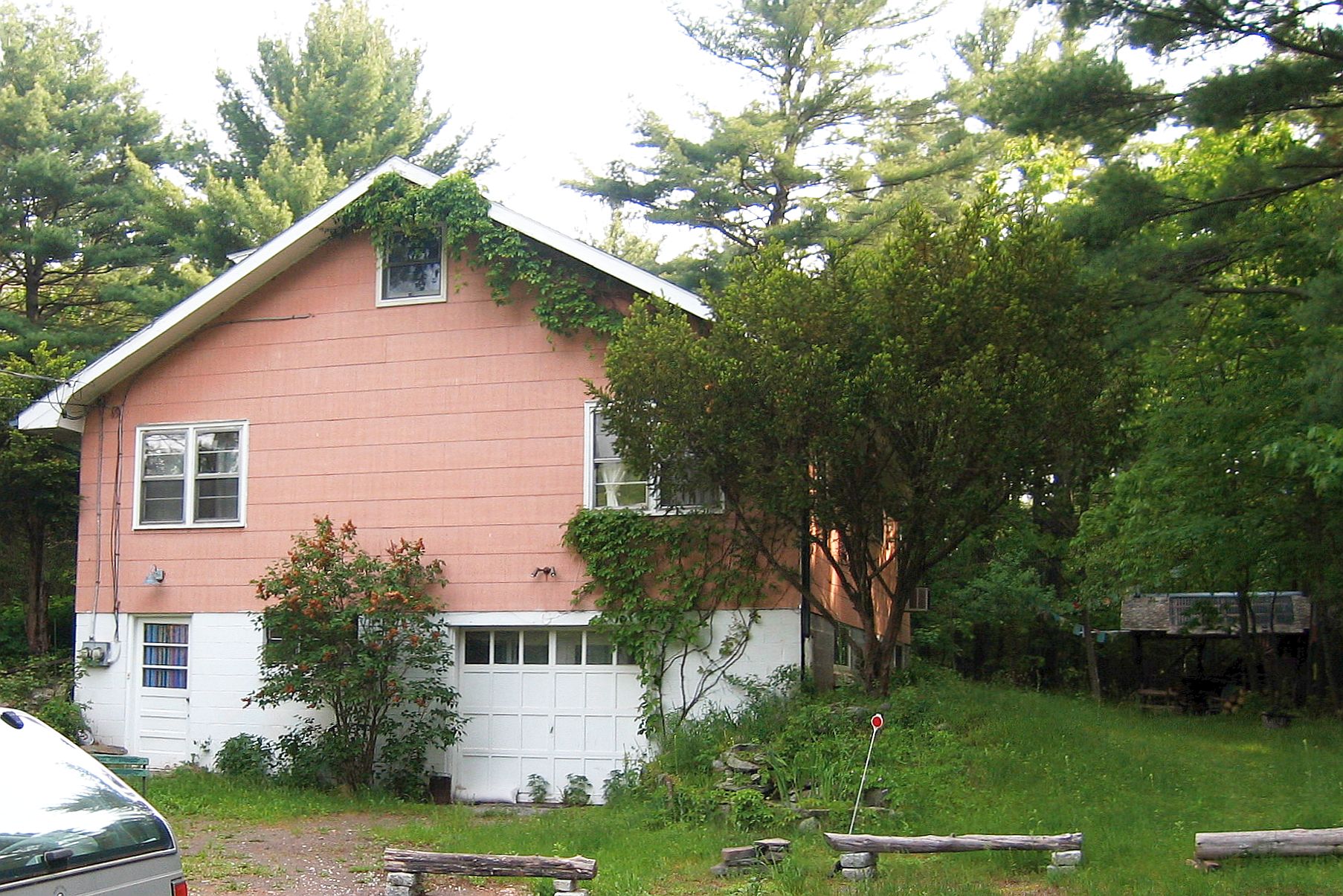
The upstate New York house known as “Big Pink” that inspired the name of the Band’s 1968 debut album, “Music from Big Pink”.
Photo by Johndan Johnson-Eilola, licensed under Creative Commons
This online exhibition uses third-party applications including Spotify and YouTube. Check with your organization’s web administrator if you are unable to access content from these channels in the exhibition.
Listen: The Weight
The Band collaborated on most of the songs featured on their album Music from Big Pink, with the majority of songwriting credits going to Robbie Robertson. The album reflected a mix of musical genres, a blend that would come to define the Americana sound of the late 1960s and 1970s.
The best-known song from the Band’s first album was “The Weight.” Although it peaked at #35 on Canadian singles charts and #63 in the US in 1968, the song became widely popular after the Band performed it live at Woodstock on August 17, 1969. It was later named as one of the "500 Songs that Shaped Rock and Roll" by the Rock and Roll Hall of Fame.
With the release of their second self-titled album, The Band, in 1969, the group continued to enjoy critical success. They reached moderate heights on the charts and became the first North American rock band to make the cover of Time Magazine in January 1970.
The group finally toured to enthusiastic crowds. Their first solo shows in Toronto in 1970 sold out two nights in a row. The venue was Massey Hall, where just a few years ago, they had faced an angry folk crowd on Bob Dylan’s first electric rock tour. This time, however, both the audience and press went wild.
Significantly, The Band's music is quiet. They once played hard-driving, ear numbing rock. Now they deal in intricate, syncopated modal sound that, unlike most rock but like fine jazz, demands close attention and rewards it with a special exhilarating delight.
—Jay Cocks, Time Magazine, 1970
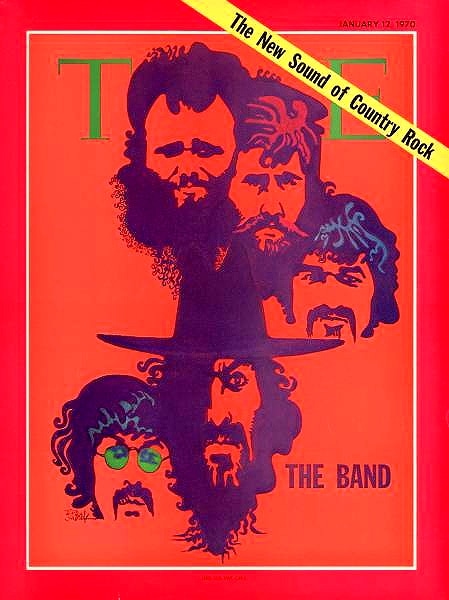
The Band was the cover story of the January 12, 1970 issue of Time Magazine. The story, “Down to Old Dixie and Back” by Jay Cocks explored the history and formation of the band and their new status as the band that helped define the sound of new Americana.
Illustration by Bob Peak; Courtesy of Time Magazine, 1970
The Last Waltz
By 1976, the Band was drifting apart, feeling the toll of nearly 20 years of constant touring and performing. Robbie Robertson decided they should end the Band’s final tour with a bang. The result was a legendary concert known as “The Last Waltz.”
Held at the Winterland Ballroom in San Francisco, the concert lineup included not only the Band but also their musical influences and friends such as Bob Dylan, Ronnie Hawkins, Ringo Starr, and Van Morrison as well as fellow Canadians Neil Young and Joni Mitchell.
Academy Award-winning director Martin Scorsese filmed the entire concert as well as interviews with the musicians. Released in 1978, The Last Waltz is considered one of the best concert films of all time.
Though the stated intention was only to stop touring, the Band’s next album following the concert, Islands (1977), was the last to feature the Band’s original lineup. Soon thereafter, Robertson left the Band to pursue a solo career. In 1982, member Richard Manuel died by suicide at age 42. The Band continued to perform and record without these two essential members, but could not achieve the same heights without them.
Watch: The Last Waltz
Watch the trailer for Martin Scorsese’s 1978 film, The Last Waltz, which records the final performance of the Band at the Winterland Ballroom in San Francisco in 1976. In addition to the Band, the film features performances by Van Morrison, Ringo Starr, Joni Mitchell, Dr. John, and Eric Clapton. The film begins with an admonition: “This film should be played loud!”
This online exhibition uses third-party applications including Spotify and YouTube. Check with your organization’s web administrator if you are unable to access content from these channels in the exhibition.

"The Last Waltz", directed by Martin Scorsese, courtesy of United Artists. Please note: this third-party video does not provide closed captions.
View TranscriptMale Voice: The object is to keep your balls on the table and knock everybody else's off.
[Music]
Levon Helm [singing]: When I get off of this mountain, you know where I wanna go.
Robbie Robertson [speaking]: The Band has been together 16 years.
The Band [singing]: Oh, they don’t know the shape I’m in.
Robbie Robertson [speaking]: It’s a damn impossible way of life.
The Band [singing]: And the sun ain’t gonna shine anymore.
Robbie Robertson [speaking]: I couldn't live with 20 years on the road. I don't think I could even discuss it.
Multiple voices [singing]: When I get over…
Robbie Robertson [speaking]: We gave our final concert, the Band's final concert. We call it the last waltz.
[Piano music]
Dr John [singing]: Such a night. Such a night
Joni Mitchell [singing]: Why’d you have to get so drunk and lead me on that way? You just picked up a hitcher. Prisoner of the white lines on the freeway.
Van Morrison [singing]: Turn it up. Turn it up. A little bit higher, radio. Turn it up. That’s enough. So you know. It’s got soul.
The Band [singing]: If it ever is forgotten, sing it long and sing it loud. And come dry your eyes.
Bob Dylan [singing]: I’d buy you a diamond ring. I’ll buy you a wedding gown. Yes, I'll do anything in this god almighty world, If you just let me follow you down.
Robbie Robertson [speaking]: The road has taken a lot of the great ones. Hank Williams. Buddy Holly. Otis Redding. Janis. Jimi Hendrix, Elvis. It’s a g**damn impossible way of life.
[orchestral music]
Male narrator voice: The Last Waltz. A film by Martin Scorsese.
This online exhibition uses third-party applications including Spotify and YouTube. Check with your organization’s web administrator if you are unable to access content from these channels in the exhibition.
Listen: Coyote Dance
After leaving the Band, Robbie Robertson worked as a music producer, wrote film scores, and developed a well-received solo career. In 1994, he released Music for The Native Americans, an album of music to accompany the US television documentary The Native Americans.
The album was a collaboration between Robertson and musicians from a variety of North American and Canadian First Nations musicians, collectively known on the album as the Red Road Ensemble.
In 2019, Robertson received the Lifetime Achievement Award from the Canadian Music Industry Hall of Fame as well as the Key to the City of Toronto.
Once Were Brothers
Together, the Band was inducted into the Canadian Music Hall of Fame (1989), the Rock and Roll Hall of Fame (1994), and received the Grammy Lifetime Achievement Award (2008).
In 2019, a new documentary detailing the Band’s rise and influence in North America debuted at the Toronto International Film Festival. Directed by Toronto filmmaker Daniel Roher, Once Were Brothers: Robbie Robertson and the Band, the film takes a new look at the group’s history together. The documentary is one of the first to highlight the influence of Robertson’s former wife, Dominique Bourgeois, who lived and collaborated with the Band during the making of their influential albums.
There is no band that emphasizes becoming greater than the sum of their parts than the Band.
—Bruce Springsteen, "Once Were Brothers", 2019
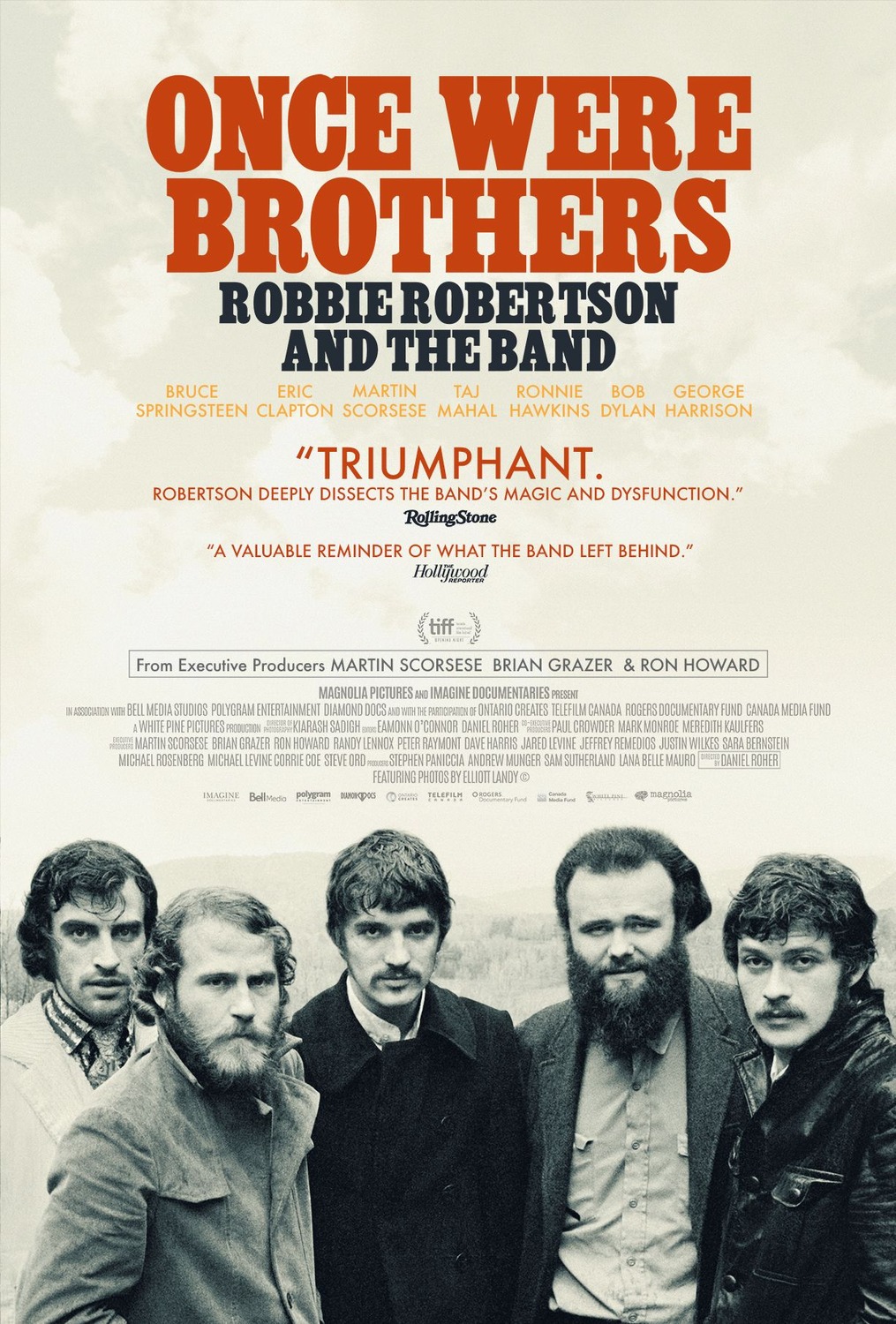
Poster for the 2019 film, "Once Were Brother: Robbie Robertson and the Band"
Courtesy of Magnolia Pictures and Magnet Releasing
Dive Deeper
The Last Waltz. Directed by Martin Scorsese. United Artists, 1978. (film)
Levon Helm. This Wheel’s On Fire: Levon Helm and the Story of the Band. New York: William Morrow and Company, 1993.
Once Were Brothers: Robbie Robertson and the Band. Directed by Daniel Roher. Magnolia Pictures, 2019. (film)
Robbie Robertson. Testimony: A Memoir. New York: Crown Archetype, 2016.

